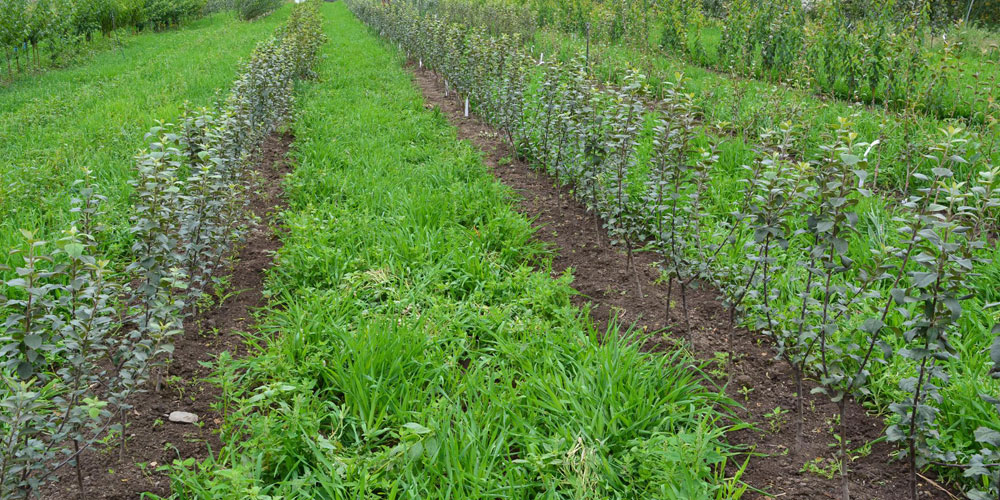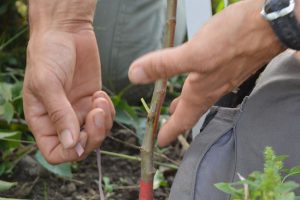Cloud Mountain Farm Center is ramping up for a new nursery season! And February through early April is the best time for planting bare root fruit trees. Fruit trees are produced by grafting variety wood to rootstocks, then field growing the resulting trees until they are big enough to transplant. Few people realize this process takes 18-30 months and requires a fair amount of planning.
Year 1

Young trees in the field
It all starts with choosing and planting the appropriate type of rootstock. The rootstock is the part of the tree where the roots are located. Different rootstocks have been developed over time for each fruit group- apples, pears, plums, cherries….the rootstock helps determine how soil tolerant the tree is, whether it needs staking or trellising support, how big it can potentially get, how soon it will start to produce fruit, and can sometimes impart crucial disease resistance.
Our rootstocks arrive from commercial rootstock nurseries in March. We plant out our rootstocks with a minimum spacing of 18″ between each plant. We water, fertilize and keep the rootstocks weeded over the course of the summer. Our goal is to have 10″-12″ tall, straight unbranched whips by August 1st, when we typically chip bud (graft) all of our fruit tree varieties. By that time, the wood from this season’s growth on our mother (variety stock plant) trees has had a chance to lignify (harden), but there is still enough time and heat left in the season to allow the chip buds/grafts to heal before winter sets in. We’ll be posting a blog later this spring with more information on the step by step process of chip budding. (You can also graft fruit trees in the late winter and early spring, but summer chip budding usually gives us more uniformly growing trees.)

Chip bud ready to wrap
We collect budwood/scion wood in the early morning during chip budding season, so the leaves are turgid and not wilted. We always use wood from healthy trees- trying to use substandard wood is a waste of time and will not yield productive results. We collect lengths of this summer’s growth, choosing wood that is close to the diameter of a pencil. Budwood is stored either in a refrigerator or in a cooler with ice until we can chip bud.
Year 2
In the fall, we evaluate which trees are ‘finished’ or ready to sell. This will include most of the stone fruit varieties- cherries, peaches and plums, which usually are ready at the end of their first summer after being budded. Some apples and pears need a second summer before we can harvest them. We tag the trees we are going to dig, and wait for a weather window (not too wet, not frozen) so we can dig them for the sales yard. The digging is a combination of undercutting them with a ‘digging bar’ on our tractor, loosening the soil with a shovel, and then hand pulling the trees out of the ground. A team of 4 people can dig 500-600 trees in a day.

